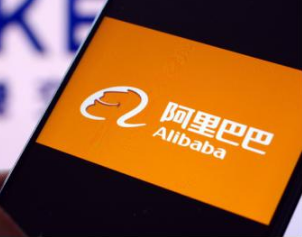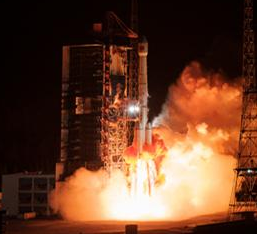At present, Huawei's 5G commercial contracts have reached more than 60, with shipments reaching 400,000 modules, and 32 of the more than 60 contracts are from Europe.
Although the final full version of the 5G standard will wait until 2020, the global commercial pace has started in 2019, and countries are vying to announce a 5G commercial network for a new round of technical arms race.
On October 15th, at Huawei's 2019 Global Mobile Broadband Forum, Huawei's vice chairman Hu Houkun said: "There are 40 operators currently releasing 5G networks. By the end of this year, there will be more than 60 5Gs. Commercial networks are available in various countries around the world. On the terminal side, as of the end of September, there are more than 136 terminals, including CPE and mobile phones."
At the forum, Yang Chaobin, president of Huawei's 5G product line, told reporters in the 21st Century Business Herald that Huawei's 5G commercial contracts have reached more than 60, with shipments reaching 400,000 modules, and 32 of the more than 60 contracts from Europe. .
Today, in the heart of Europe, Huawei once again disclosed its new 5G performance, and together with China Mobile, Sunrise, Vodafone, Zhenhua Heavy Industry and many other partners in the industry chain to showcase 5G application cases.
Faced with the US technical blockade, Huawei's 5G commercial is opening a new situation, and the European market is continuing to expand. 5G products without 5G components have been shipped.
Recently, Huawei founder Ren Zhengfei said in an interview with the media that Huawei’s “holes” from 5G to the core network have all been completed. “From 5G to the core network, the United States has no impact. Basically Huawei’s own work. But this is not our purpose, but a means of this period. Our aim is to provide advanced services to human beings in a rational division of labor."
Commercial prospects and challenges
In Ren Zhengfei's view, 5G is an important tool in the future. "The emerging technology in the future should be intelligent computing, from intelligent computing to artificial intelligence. 5G is just a supporting platform that supports artificial intelligence to achieve a platform with low latency and high bandwidth."
And this basic platform has a vital role to play. Globally, the 5G network is rapidly spreading, and it takes only one year to enter the commercial period.
Take the communications radical South Korea as an example, as the first country to release 5G commercial, it has already ushered in the improvement of users. After 6 months of commercial use, South Korea's 5G network has developed 3.5 million users. The amount of data running on this network is also growing rapidly, data traffic has increased by 3 times, and now it has reached 1.3GB per person.
These new services bring not only traffic growth, but more importantly, the growth of operators' revenue. Taking an operator in South Korea as an example, the proportion of high-end tariff users increased from 3.1% to 5.3% after 3 months of 5G launch.
Yang Chaobin also predicted: "5G has been commercialized since the beginning of this year. We believe that next year, the number of 5G terminals will exceed 500, and 5G users will exceed 200 million worldwide next year, and will exceed 500 million in the following year."
At the same time, the application cases of the vertical industry are increasing rapidly. Although the killer application has not yet appeared, everyone's imagination for the future of 5G is increasing.
At the forum, Huawei demonstrated the latest 5G technology solutions, commercial cases, and rich applications for 2C, 2H, 2B, including 5G cloud AR/VR, 5G 8K live, 5G cloud games, 5G machine vision, 5G remote control, etc. .
Talking about the challenge of 5G accelerated development, Hu Houkun pointed out that the government needs to promote a more active regulatory policy with a pragmatic attitude. First, the rational planning and allocation of spectrum resources is crucial to the development of the 5G industry. However, the current supply quantity and price of 5G spectrum are challenging. On the basis of ensuring sufficient spectrum supply, the regulatory agencies can further consider adopting flexible pricing models to reduce the initial investment in operators' 5G network construction. For the spectrum demand of the next 5-10 years, the government needs to prepare for the 5G new spectrum, such as the 6GHz band.
In addition, the cost of current site resources is still high and the supply is insufficient. Regulators need to take a variety of positive steps to improve the current situation. For example, build, open, and share more public infrastructure and provide appropriate guidance. Some government's practical experience is worth learning. For example, the Shanghai Municipal Government will provide 30,000 site resources through the transformation and construction of a 500-kilometer road social pole, which is equivalent to 75% of the total number of Shanghai sites. In Europe, government agencies work with operators to define the requirements for public infrastructure for 5G site construction and to identify the possibility of sharing these facilities.
Outside the spectrum and the site, Hu Houkun also stressed the need to establish cross-industry ecological cooperation to jointly find a business development model and business model applicable to 5G.
A communicator pointed out to the 21st Century Business Herald: "Overall, 5G has been put into production at the technical level, but large-scale commercialization has to wait. 5G competition is a battleground in the competition of big countries, and 4G is progressing in productivity. There are promotions, such as the development of the industry, the birth of Xiaomi, the US Mission, and the re-engineering of Ali, Tencent, the 5G era of large companies will continue to develop. By the 5G era, the overall social cost efficiency has improved, Huawei's Hongmeng Google's fuchsia, German Industry 4.0, will continue to advance the technology that drives productivity."
Alliance and breaking
The development of 5G is in full swing. Starting from 5G, mobile communication has entered a new stage, and it is still in the stage of infrastructure construction. It is worth noting that the intergenerational replacement between 4G and 5G is not a smooth transition like 3G to 4G. Nor can 5G be used as an extension of the mobile Internet, and 5G will grow a new species.
Artificial intelligence is equivalent to inventing computers, and 5G is the infrastructure for inventing computers. 5G is a key to entering a new era, and this key is to be held in the hand.
However, for Huawei, it faces a complicated situation. The US blockade has brought a lot of volatility. The current game of Huawei is a chaos, full of uncertainty.
Next, how does Huawei open a new situation?
Although Ren Zhengfei emphasized that 5G to the core network industry, Huawei has completely no need for US parts. However, cooperation and openness are still the main theme of Huawei.
On the one hand, Huawei continues to work closely with partners such as global operators. On October 14, Swiss operator Sunrise and Huawei jointly established the first 5G joint innovation center in Europe.
Yang Chaobin told reporters: "Although Switzerland has strict power restrictions, Huawei and Sunrise have implemented in different scenarios through the deployment of products such as Super BladeSite, Massive MIMO and Book RRU. 5G network coverage in more than 300 towns. Huawei's Massive MIMO products utilize the C-band spectrum of the Sunrise 100M to achieve a 5G single-user rate of up to 2Gbps and a capacity of 20-30 times that of 4G. 5G achieves coverage in the suburbs."
For another example, Zhenhua Heavy Industry, China Mobile, Vodafone and Huawei jointly released the “5G Smart Port White Paper” to accelerate the implementation of 5G in port automation and intelligent construction.
On the other hand, Huawei continues to build and open up its ecology, including Ren Zhengfei’s willingness to sell Huawei’s 5G technology. Obviously, it is a clever trick to exchange technology for the market.
Ren Zhengfei said to the media: "First, we are willing to follow the FRAND principle of international practice to license 5G patents to US companies in a fair and non-discriminatory manner. Second, 5G proprietary technology, including complete 5G complete network technology, completely Unlicensed exclusive license to US companies, so that US, European, and Chinese companies start at the same time and continue to compete on new technologies. Third, the United States can choose 5G base stations based on US general-purpose chips, or choose 'US General Purpose Chips + Huawei The chip's way, if we need our 5G chip technology, we can also transfer the license."
Recently, good news came from the European market. It is reported that Germany has finalized the 5G mobile network construction regulations and will not exclude China's Huawei. German operators are Huawei customers, and they warned that banned Huawei will delay the deployment of 5G networks for several years and increase the cost of billions. It can be seen that in the European market, Huawei's 5G business is rapidly expanding, and there are already cooperation in the United Kingdom, France, Switzerland, Italy and other countries.

 小任班长的博客
小任班长的博客 

